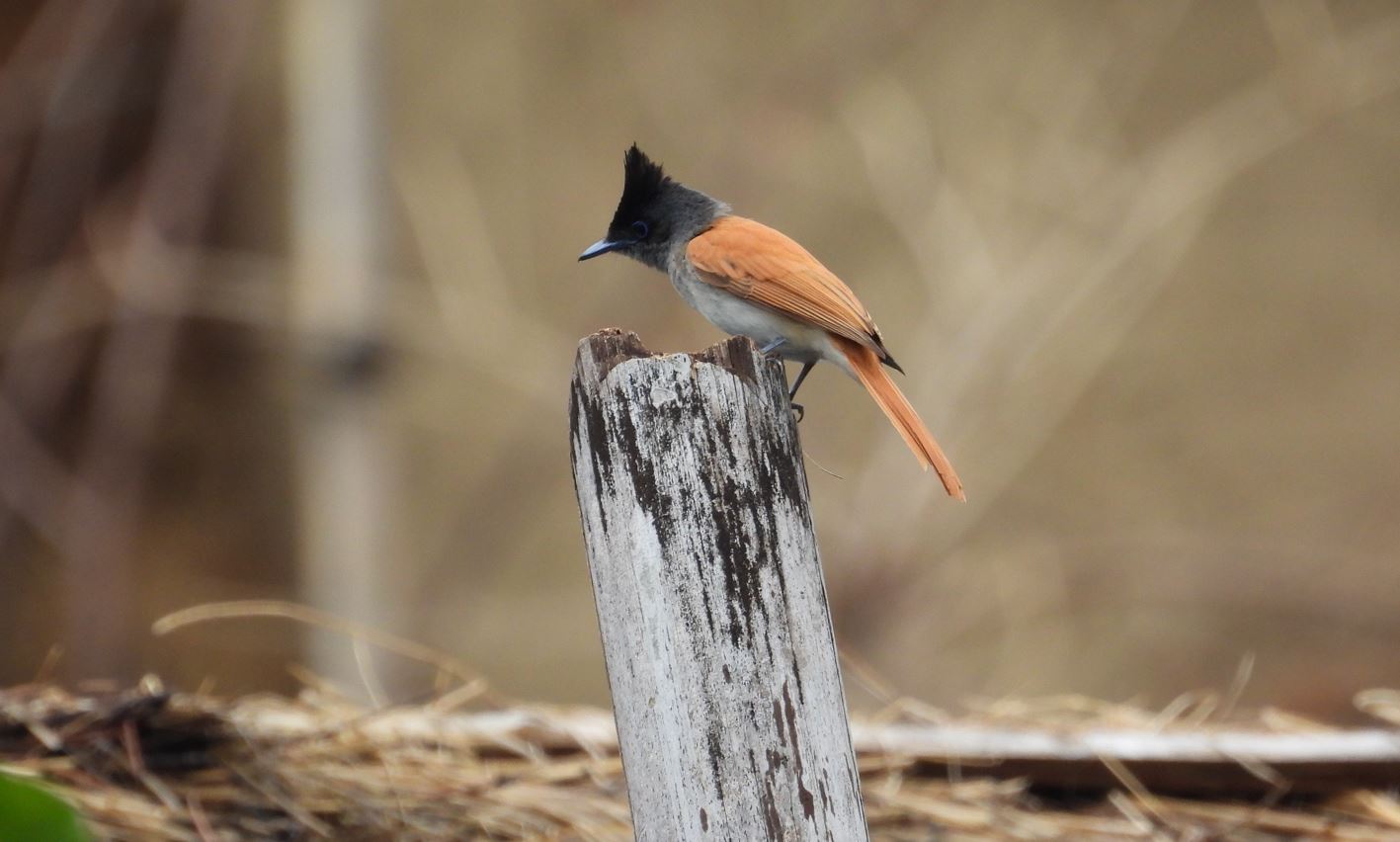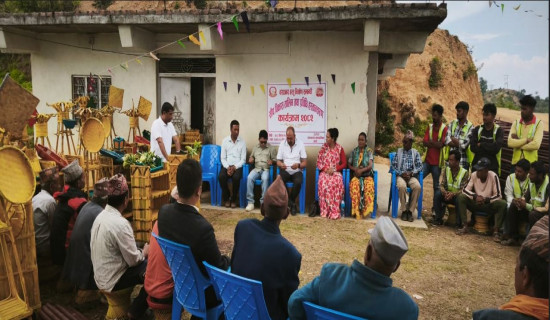- Sunday, 29 June 2025
217 bird species recorded in Gaumukhi area of Pyuthan
By A Staff Reporter,Kathmandu, June 29: A total of 217 species of birds have been recorded in the Gaumukhi area of Pyuthan. A scientific study carried out in Gaumukhi Rural Municipality during October 2022 and May 2025 recorded 4,538 birds belonging to 217 different species.
Among these, 88 species were common to both seasons, suggesting a stable group of resident birds, said ornithologist Krishna Bhusal, Secretary at the Friends of Nature.
According to a press release issued by Bhusal, 32 species were exclusive to the October survey, while 97 species were found only in May, including notable summer visitors such as cuckoos, bee-eaters, Indian Paradise Flycatcher, Indian Golden Oriole and Pied Thrush.
Gaumukhi Rural Municipality, situated in the northeastern part of Pyuthan District, Nepal, is characterised by diverse topography ranging from lowland valleys to high-elevation zones exceeding 3,000 metres.
An elevational gradient survey was also conducted from 1,100 metres (Thulabensi) to 3,300 metres (Nangi Hill) using fixed vantage points at 100-metre intervals, Bhusal said.
The analysis revealed a significant negative relationship between elevation and bird species richness, with peak diversity and abundance observed between 2,000 and 2,500 metres.
Of the total species recorded, 99 have recognised conservation importance, he said. The area supports two nationally protected species, Cheer Pheasant and Satyr Tragopan which are among the nine protected bird species of the country.
Similarly, five globally threatened species were recorded. They are include -- Cheer Pheasant, White-rumped Vulture, Red-headed Vulture, Egyptian Vulture and Steppe Eagle. The site also hosts 17 nationally threatened species, four restricted-range species, 69 biome-restricted species and 31 CITES-listed species. Nesting of Himalayan Griffon was confirmed, and probable nesting of Bearded Vulture was observed near Gaumukhi Temple cliffs, according to Bhusal.
“Beyond birds, the study also documented the area’s broader biodiversity, including eight butterfly species, five fish species, four amphibians, eight reptiles and 18 mammal species. The region's natural beauty and cultural heritage offer significant ecotourism potential,” Bhusal said.
Trekking routes such as the trail from Thulabensi to Nangi Hill (1,100–3,300m) traverse lush forests, vibrant rhododendron and juniper habitats, rivers and traditional villages.
Attractions like Baismul Waterfall, Rani Daha, Gaumukhi Cave, Jhakridhunga, and Ishnadevi enhance its appeal for both spiritual and nature-based tourism. With its exceptional biodiversity, scenic landscapes, and rich cultural tapestry, Gaumukhi Rural Municipality stands out as a valuable conservation site and an emerging destination for ecotourism and nature enthusiasts.
He said, “We strongly recommend the formal declaration of the Proposed Gaumukhi Protection Forest, as this status will provide a legal framework to safeguard its rich biodiversity. In addition, the area has been found to meet the criteria of an Important Bird and Biodiversity Area (IBA), as per standards set by BirdLife International and recognised by Bird Conservation Nepal, Department of National Parks and Wildlife Conservation and Department of Forest Soil Conservation (2024).”
This recognition strengthens the case for urgent protective designation and prioritisation in national biodiversity strategies.
Strategically, Gaumukhi lies adjacent to already designated IBAs such as Madane and Argha and is connected with the Kothibhir, forming a part of a larger network of Himalayan biodiversity hotspots, Bhusal said.
This ecological continuity reinforces the area's conservation value and its potential for birdwatching and trekking-based ecotourism, which could support local livelihoods while promoting sustainable development.
“However, illegal hunting poses an immediate threat, with direct evidence including gunfire heard during evening hours. This issue is exacerbated by the area’s proximity to the Baglung and Gulmi districts. Therefore, coordinated action is urgently needed, involving relevant authorities and communities across district borders, to combat poaching, strengthen enforcement, and raise awareness,” he said.
















